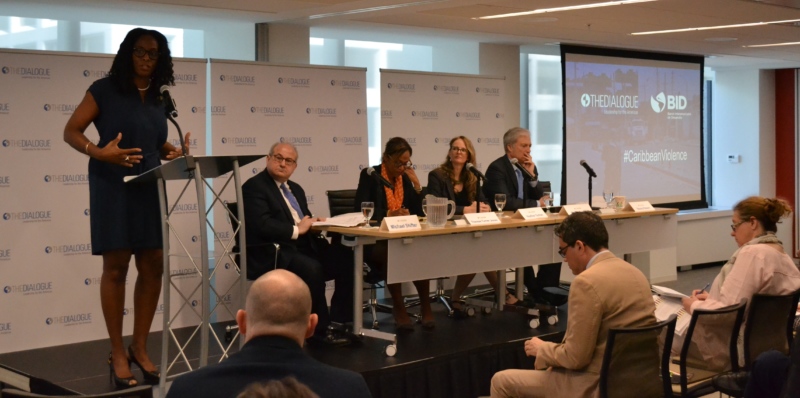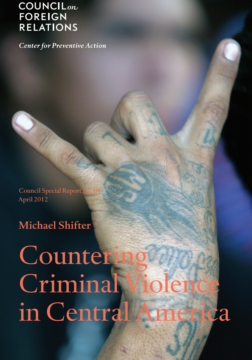A Conversation with Alonso Salazar
Medellín is Colombia’s second largest and fastest growing city, but also the most dangerous major city in the country.
On Tuesday, May 6th, the Inter-American Dialogue and the Inter-American Development Bank (IDB), hosted an event with Therese Turner Jones, General Manager of the Country Department Caribbean Group at the IDB; Heather Sutton, Study Coordinator & Researcher of the Citizen Security Area at the IDB; Stacey Plaskett, Member of US House of Representatives for the US Virgin Islands; and Richard Aborn, President of the Citizens Crime Commission of New York City. This event was the launch of the IDB’s new publication Restoring Paradise in the Caribbean: Combatting Violence with Numbers. The speakers focused on crime and violence, the region’s greatest challenge.
Jones started the event by explaining that the top challenges in the Caribbean are its macroeconomic vulnerabilities since crime is the biggest obstacle for investment. Crime and fear of crime restrict productivity, constrain investment, and reduce the overall wellbeing of society. The Caribbean is one of the regions where governments spend the most on combating crime, but why are there no results? This book attempts to provide data that will aid in the design of better policies.
Sutton followed by highlighting some of the findings of the book:
Sutton concluded with some recommendations. In terms of prevention, there is proof that targeting those that are most at risk has proven successful. Regarding policing, she suggested a randomized control trial for hot spot policing. Initiatives to improve court administration systems and reducing backlogs and implement prevention courts have aided in justice implementation. Finally, in terms of prisons, alternative sentencing and rehabilitation sentences have been successful. There needs to be a balance between prevention and control policies targeted to key individuals and geographical areas. Sutton also recommended that all interventions should be evidence-based and tested. Also needed are better monitoring of key indicators of the criminal justice systems.
Cultures of violence are "screaming out for intervention" -@AbornforDA on #CaribbeanViolence https://t.co/kDGVjk8Pj4 pic.twitter.com/EJqeT3kHKp
— The Dialogue (@The_Dialogue) May 16, 2017
Plaskett continued by underscoring the fact that violence has always been the culture of the Caribbean since its creation and development. She highlighted three areas that she believes have led to the resurgence of crime and violence: weak control of the borders, which are used to transport drugs to the US; limited budget, inadequate resources, and sparse investment in the region; and the stagnation of jobs and increased brain drain. What can be done at the federal level? First, increase defense and homeland security by allocating additional resources on border control to the Virgin Islands. Second, support investment. Finally, support social services in the Caribbean.
Aborn closed the panel by highlighting the main trends of crime and violence in the Caribbean. First, there is prevalence of violence linked to low levels of accountability. Second, there is a culture of violence and victimization. Finally, a balance between prevention and policing is needed. He continued by suggesting three areas that need further research: the role of trauma and grief in understanding why the youth is attracted to gangs; the use of social media in perpetuating violence; and the role of impunity in perpetuating crime. Finally, he highlighted the role that policing can have in preventing crime. It is necessary to combine policing in terms of likelihood of apprehension, certainty of prosecution, and a firm and swift justice in order to recreate the successful classic deterrence model.
The event concluded with a question and answer section during which the speakers discussed the relation of culture and religion to crime, the external drivers of crime and violence in the Caribbean, and the balloon effect of drug trafficking.
You can watch the recording of the event here:
Medellín is Colombia’s second largest and fastest growing city, but also the most dangerous major city in the country.
What are Caricom’s greatest achievements? Could closer integration benefit the region and, if so, what steps would have to be taken to achieve it?
Violent crime in Central America, particularly in the “northern triangle,” is reaching breathtaking levels.
 Irene Estefania Gonzalez / Inter-American Dialogue
Irene Estefania Gonzalez / Inter-American Dialogue
